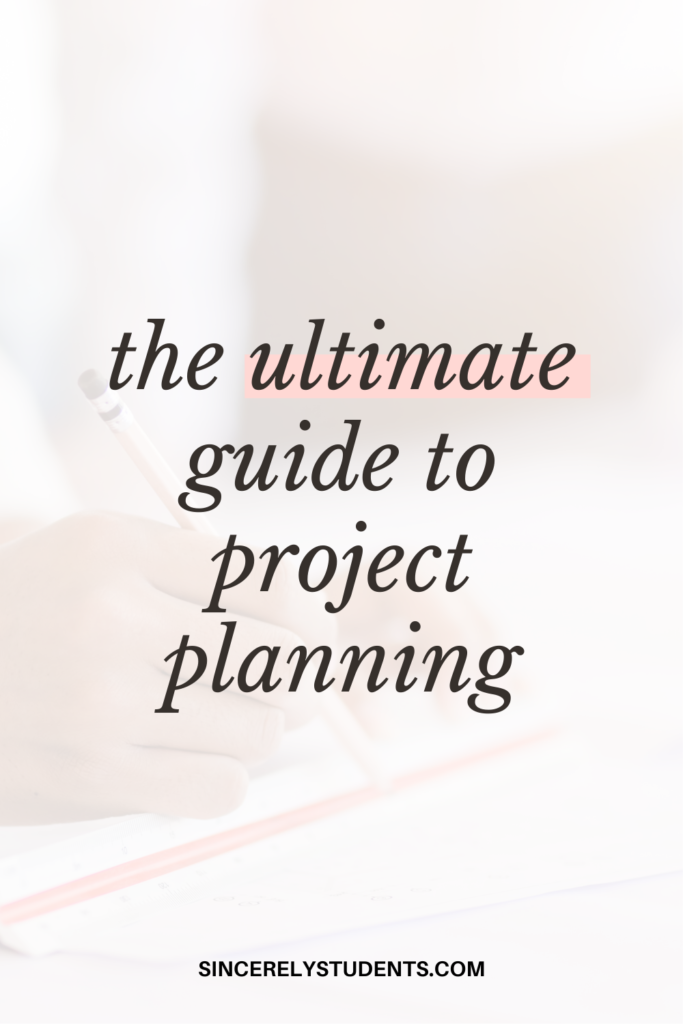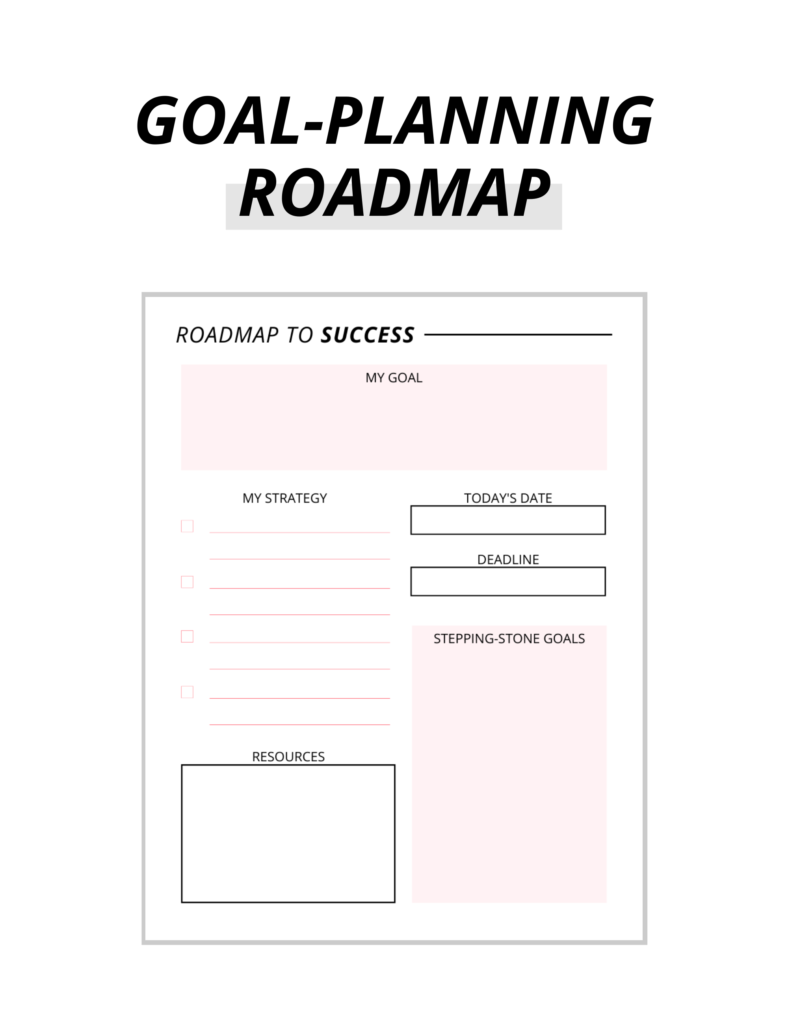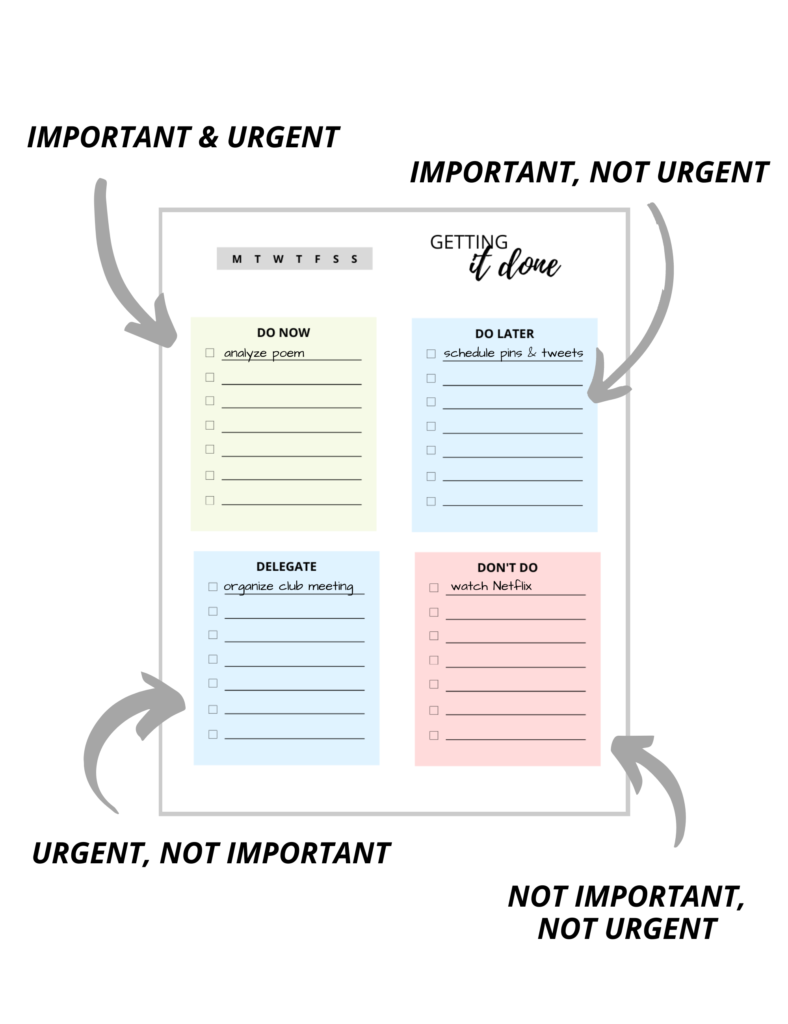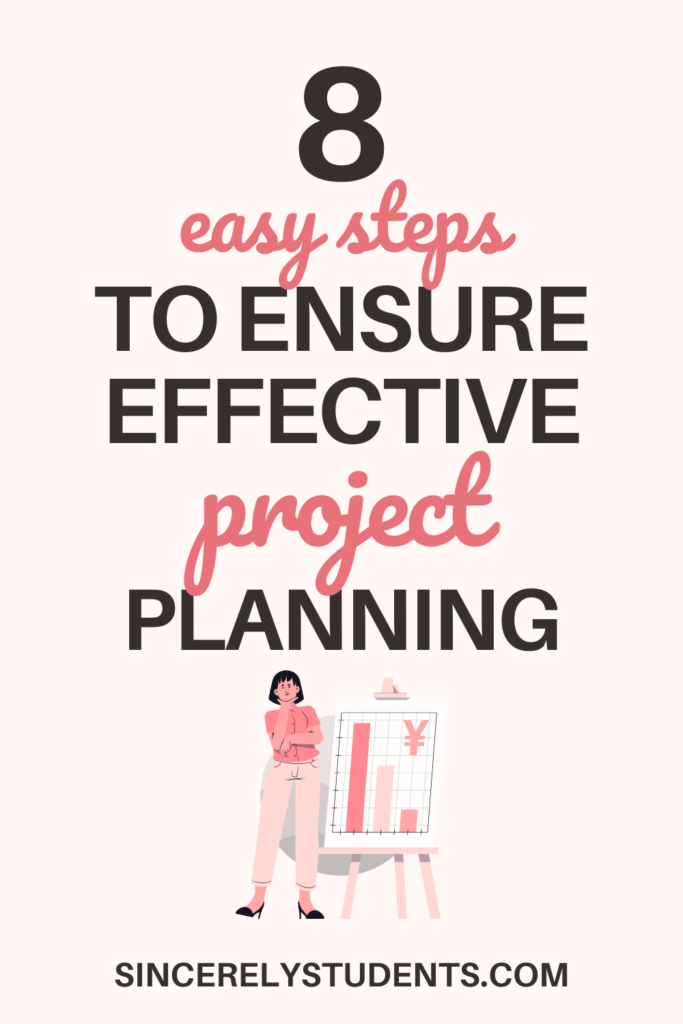Have you noticed? Planning a project sometimes takes longer than completing the project. But this isn’t always (if ever!) a bad thing!
A detailed and thorough plan will make the actual completion of the project much easier. And once you’ve mastered the project planning process, it will all come along much faster and easier.
In this post, I’m going to show you the complete process of project planning, so you can be highly efficient and productive while planning and completing future projects.

Decide on the topic
Though this seems pretty obvious, it can be easy to overspecify or overlook certain projects. For me, a project is similar to a goal. I plan for it, create stepping-stones for myself, follow a strategy, and eventually reach/complete that project.
Though it’s alright if your goal is specific, you won’t be able to set the short-term goals that will bring you toward its completion. I suggest starting broad, like starting a money-making blog.
To prevent yourself from overlooking projects entirely, sit down with yourself at the start of each month, and preview the month’s to-do list. Some examples of projects you could take on include:
- Getting an A in a certain class.
- Getting into a certain university.
- Becoming an officer of a certain club.
- Moving into a new apartment.
- Losing/gaining weight.
Get organized
Next up is one of the most important steps of project planning: organization.
Attacking a project without organizing everything first is a move I will never recommend doing. There are many aspects of a project you must organize, including (but not limited to!):
- Your detailed long-term goal(s).
- Your short-term goals.
- A calendar of important dates.
- People who will be part of the project.
- People who can help with the project.
- Outside resources you will use.
- Physical tools you’ll need.
- A master to-do list.
- Other notes and questions.
As you can see, each project has many many nuances you need to sort out. Sometimes, it’s easy to figure out and organize these different aspects; other times, it will take a lot of time and energy.
In the latter case, take the time to sit down with a notebook or your laptop and write it all out. Use a planner or organizer to note all of the listed things as well as any other steps you feel the need to take.
YOU’LL LOVE THIS POST: 23 Easy Habits That Will Skyrocket Your Productivity
Set a SMART goal
Before you start the project and at the very beginning of your planning process, you must have a vision for the completion of it. And this vision must be ultra-specific and SMART, following these rules:
- S: Specific
Your goal must be specific, answering the 5 W’s of who is involved, what is achieved, where it will occur, why it is significant, and when it will be completed by.
- M: Measurable
There must be a quantitative measure in your goal, whether it’s the amount of time you will take or the amount of stuff you will get done.
- A: Achievable
Your goal must be realistic and achievable for yourself. You must consider your own abilities (though they can and should develop in the process of completing the project) and other constraints like time and resources.
- R: Relevant
Make sure that your goal and your overall project is actually significant, is occurring at the right time, and will benefit either yourself or someone else.
- T: Time-bound
Lastly, set a deadline for your project and goal. This will set the entire planning process to action, keeping you accountable and focused on your goal.
Create smaller goals
Next up in the process is… that’s right, more goal-setting!
When setting smaller, short-term goals, it’s important to keep your long-term, SMART goal in mind. Each of your smaller goals should be a stepping-stone in your process of completing the entire project.
So before tackling the goal you created in the last step, break it down; you can generally break projects down based on time, amount, and/or method.
For example, if my SMART goal was:
- I will make $1,000 from my blog by August of 2021, which I can achieve by continuously writing posts and marketing through Pinterest.
Some of my smaller goals could be:
- By February of 2021, I will have made $300 from affiliate marketing.
- I will write at least 2 posts each month that promote a product.
- By February of 2021, I will have created 4 great-quality digital products.
- Each month, I will plan/make a product.
As you can see, both these goals (and their sub-goals) are parts of my long-term goal, but are “pieces” of it to help me track my progress and complete my project in a simpler and more practical way.
Track your progress
Tracking your progress will allow you to stay organized, stay accountable, and stay on track to complete your project in a timely manner while maintaining quality. And it’s super simple to do! Checklists and/or numbered steps are always helpful in progress tracking.
I highly suggest using a planner to do this. You can download this super simple and intuitive Goal-Planning organizer for FREE from my Freebie Library.

If you want to go the extra mile, invest in a high-quality planner like this one, and write down all the nuances, including your long-term and short-term goals. This planner will last you a long time and will allow you to organize and plan for many projects, so it’s definitely worth the small investment!
Prioritize, batch, and delegate
I’ve mentioned the importance of prioritizing in previous posts, such as 10 Brilliant Habits To Organize Your Entire Life. Instead of being intimidated by a large project and procrastinating on it, learn to prioritize tasks and tackle them one by one.
My go-to method of prioritizing is by using the Eisenhower Matrix. You can use this matrix for every task in your to-do list to figure out what to do first, what to do later, what to have others do, and what not to do– otherwise known as prioritizing and delegating.

With more practice, you’ll be able to distinguish important vs non-important tasks quickly in your head. But as you’re just beginning, use outside resources to your advantage!
You can also get this organizer for free in my Freebie Library.
Reward yourself
One of the most overlooked aspects of project planning and project completion is the rewarding process. Humans learn faster and easier when there are reinforcements after the completion of certain performances.
In this case, you should reward yourself after the completion of each stepping-stone (remember your smaller goals?). Personalize your rewards to motivate yourself the most however you can, but don’t overdo it.
Here are some ideas for that motivation boost:
- A small gift you’ve been eyeing.
- A night off for gaming or movie night.
- Anything you’ve missed doing for a while.
Create a routine
Now that you’ve planned out the entire project and how you’re going to tackle it, you must build the habit of checking in on yourself and making sure you’re staying on track.
To do this, create a time-based routine that measures the amount of stuff you’ve done– sound familiar? Yes, this sound corresponds with your smaller goals!
For example, since one of my stepping-stone goals was to make $300 from affiliate marketing by February of 2021, I must routinely check in every month to check my progress.
These check-ins must become ingrained in your mind, because you are the only one keeping yourself accountable as you complete your project. If you have trouble building habits and sticking to them, I suggest practicing.
And also try this Complete Habit-Building Workbook (made by yours truly), which outlines the foolproof 8-step process of habit-building, along with multiple habit tracker templates.
Conclusion
I hope this post will be able to help you plan an outstanding project! Leave a comment with a project you’re currently working on and how you’re going to use this guide to improve your project planning!
And if you’re looking for more, here are some related posts:
- 7 Secrets Successful Students Will Never Tell You
- 7 Personal Growth Goals That Will Make You Happier
- 10 Brilliant Habits To Organize Your Entire Life
